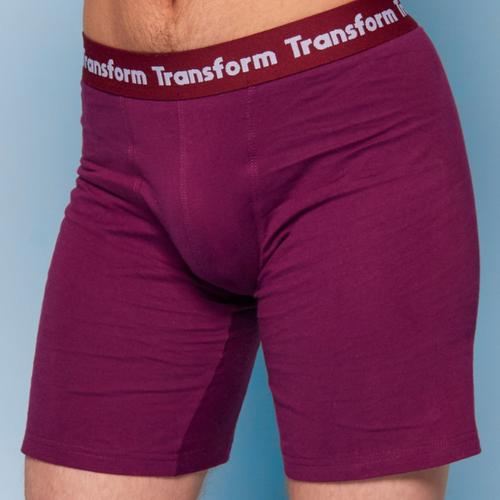Chest binding is a gender-affirming practice that plays a vital role in the lives of many transmasculine, nonbinary, and gender-diverse people. It can significantly reduce gender dysphoria and improve mental wellbeing - but safety matters.
In this post, we explore the latest medical research on chest binding, practical tips for safer use, and how our range of chest binders at Transform Transwear can support your journey with comfort and care.
Landmark Study: Health Impacts of Chest Binding
Study:
Health Impact of Chest Binding Among Transgender Adults
Authors: Peitzmeier et al.
Published in:
Culture, Health & Sexuality, 2017
Link to full paper:
Download PDF
In the largest study of its kind, researchers surveyed 1,800 trans and gender-diverse adults with chest binding experience. Their findings provide important insights into both the physical risks and mental health benefits of binding.
Key Findings:
-
97% of participants experienced at least one physical symptom from binding.
-
Common symptoms included:
-
Chest pain (48.8%)
-
Shortness of breath (46.6%)
-
Skin irritation (36.1%)
-
Overheating (53.5%)
-
Back and shoulder pain (53.8%)
-
Despite these effects, the majority reported improved mental health, including reduced dysphoria, less anxiety, and increased confidence.
Binding Methods Compared:
-
Commercial binders were the most commonly used and offered the best balance of safety and effectiveness when properly fitted.
-
Improvised methods (duct tape, elastic bandages) were linked to higher risk and are not recommended.
Follow-Up Research and Clinical Guidance
1. Adolescent Health Outcomes Study (2019)
Inwards-Breland et al. confirmed that young people binding daily faced increased physical strain, but also noted a strong link between binding and improved mental wellbeing.
2. Transgender Health Practice Study (2020)
Wernick et al. found that individuals who received medically accurate binding advice had fewer long-term complications, underlining the importance of informed support.
3. WPATH Standards of Care Version 8 (2022)
WPATH now formally recognises chest binding as a gender-affirming practice and recommends:
-
Using purpose-designed commercial binders (such as our binders)
-
Avoiding binding during sleep or intense physical activity
-
Limiting binding to 8–12 hours a day
-
Taking rest days when possible
Safer Binding: Practical Tips
Based on current research and clinical guidance, here’s how to bind more safely:
-
Use a proper binder: Avoid makeshift options. Our compression binders are purpose-made for safe daily wear.
-
Get the right fit: Never size down. Use our binder sizing guides to find your correct fit.
-
Limit wear time: Do not exceed 8–12 hours per day.
-
Avoid binding during sleep: Always remove your binder before bed.
-
Take recovery days: Aim for at least one day off per week.
-
Prioritise skin care: Keep your skin clean, moisturised, and dry. Use talc-free powders if needed.
-
Breathe and stretch: Practice chest and shoulder stretches after removing your binder.
Shop Safer Binders at Transform Transwear
We offer a growing range of chest binders designed to be safe, comfortable, and size-inclusive.
All of binders are available in XXS to 5XL and come with detailed sizing information. Our binder FAQ covers wear tips, care, and safety advice.
Final Thoughts
Binding can bring enormous psychological relief and is a vital part of gender affirmation for many. The research is clear: binding safely is not just possible—it’s essential.
By choosing well-fitted, purpose-designed binders and following evidence-based practices, you can minimise risks and prioritise your mental and physical wellbeing. At Transform Transwear, we’re here to support that balance every step of the way.
References
-
Peitzmeier SM, Gardner IH, Weinand JD, Corbet AL, Reisner SL. (2017). Health Impact of Chest Binding Among Transgender Adults: A Community-Engaged, Cross-Sectional Study. Culture, Health & Sexuality. Read here
-
Inwards-Breland DJ, et al. (2019). Binder use and physical health outcomes among transmasculine adolescents and young adults. Journal of Adolescent Health.
-
Wernick JA, et al. (2020). Perceptions and practices of chest binding among transgender and non-binary adults. Transgender Health.
-
WPATH. (2022). Standards of Care for the Health of Transgender and Gender Diverse People, Version 8.
Need help finding your fit or choosing the right binder?
Contact our friendly support team at
hey@transformtranswear.com.au.









